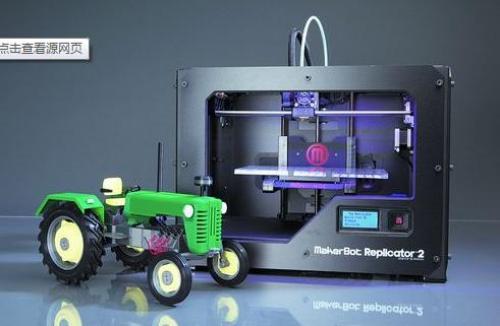
According to foreign media reports, Hewlett-Packard CEO Meg Whitman (MegWhitman) announced at the shareholders meeting on March 20 that the company plans to enter the 3D printer market before the end of this financial year (HP fiscal year end time is October 31st ).
Although 3D printing technology has been available for more than 10 years, it has given imagination to the manufacturing industry. Because some developments in the 3D printing industry have reduced manufacturing costs, the growth rate of the 3D printing industry in the coming years will reach a staggering rate. More than 30%. The current leading 3D printing industry is a number of small companies such as 3D Systems and Stratasys. However, with HP's involvement in this industry, competition will certainly increase. Although HP has not yet disclosed more information about 3D products, this article will analyze the 3D printer market and the reasons why HP is involved in this market. In addition, we will also analyze HP's impact on the 3D printing market.
3D printer market
The global 3D printing industry is widely believed to disrupt large-scale manufacturing activities because it reduces the huge capital required to maintain and operate factories.
According to market research firm Gartner, in 2013, the end user's overall spending on 3D printers was US$412 million, an increase of 43% from US$288 million in 2012; corporate spending in 2013 was estimated to exceed US$325 million, and consumer spending reached nearly 8700 Ten thousand U.S. dollars.
Gartner also expects that spending on 3D printers in 2014 will increase by 62% to $669 million, of which corporate spending will be $536 million and consumer spending will be $133 million. Gartner estimates that sales of 3D printers will increase from 56,507 in 2013 to 98,065 in 2014. Gartner also expects sales of 3D printers to double in 2015.
The current growth in spending on 3D printing is mainly the single-piece or small-lot model of newly designed products, the fixtures and fixtures used in the manufacturing process, and the mass customization of manufactured products. With the advancement of 3D printing technology, which includes software and hardware, material costs, and the reduced complexity of producing 3D printing models, the application of 3D printing technology will expand to architectural, military, medical products, and jewelry design. According to market research firm Wholers Associates estimates that by 2021 sales of 3D printing products and services, including printers, printed materials and products, will grow to more than $10.8 billion. This is insignificant compared to the sales of global manufacturing. Given the scale of the global manufacturing industry, we believe that the market space for the 3D printer industry and its products is still large.
Why does HP now enter the 3D printer market?
According to data from market research firm IDC, HP is the leader in the 2D printer market, with a market share of nearly 40% in 2013. HP believes that 3D printing is a natural extension of the 2D printing business. HP announced at its shareholders’ meeting last week that the company plans to enter the 3D printer market by the end of this fiscal year. The main reason HP now enters the 3D printer market is that some of its core patents have expired or will expire within a year. HP will now enter the 3D printer market without spending a lot of time and money developing new technologies. The high price of consumables in 3D printers has always been a major obstacle to innovation in this area, but HP claims to have solved many technical problems that affect the widespread adoption of 3D printing technologies, such as low print output quality and long print times.
HP's entry will have a positive impact on the 3D printing industry
HP's entry into the 3D printing industry will help to promote the development of this emerging industry and help counter the criticism that 3D printing technology is not mature enough to be popularized among consumers. In addition, HP's entry will also help to stimulate innovation in the 3D printing industry, because HP is well-funded (having a $16 billion cash reserve) and is able to spend a lot of money on technology research and development at any time.
Due to its ability to mass-produce 3D printers in a cheap manner and sell through a comprehensive sales channel, HP can accelerate the adoption of 3D printing technology. Hewlett-Packard and a large number of companies selling PCs and printers can also help these companies produce some products, which not only give HP but also bring synergies to its customers.
HP has not disclosed too much information related to its products, but stated that it will first sell 3D printing products for "corporate" customers. Although it is still too early, we believe that most of the revenue for the 3D printer business will come from "ink" rather than the printer itself, mainly because customers will need more "ink" as 3D printing technology becomes more popular.
Bldc Motor,Brushless Dc Motor,Bldc Hub Motor,Brushless Dc Fan
Wentelon Micro-Motor Co.,Ltd. , https://www.wentelon.com